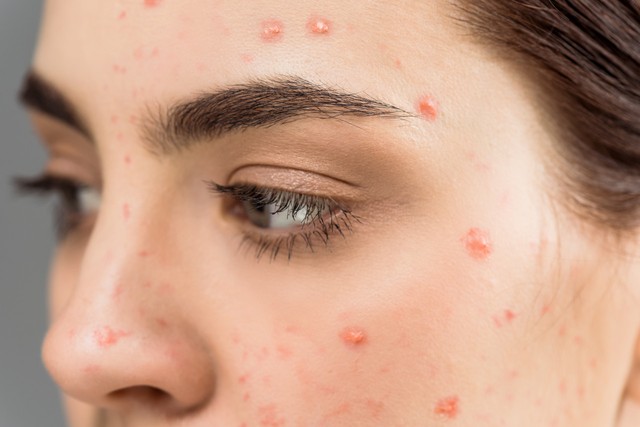November 20, 2023

Acne, also known as acne vulgaris, is treated differently in two ways: the
Non-inflammatory: blackheads, closed mouths
Clogged pores, where oil is not produced and mixes with old keratin, which then solidifies to form keratin plugs that clog/get stuck in the pores to form pimples, open pimples (blackheads) and closed pimples (occlusal).
Inflammatory type: pimples, pustules, nodules, etc.
If acne is infected and inflamed by bacteria,暗瘡消炎藥 it can develop into acne that begins as small, red, bumps, or pimples. As the inflammation gets worse, white or yellow pus develops in the center of the pimple and it becomes pustular acne. If the infection is deeper, the PUS does not penetrate deeper into the skin and protrudes into red, hard, painful pimples called nodular acne, and some severe infections continue to expand and develop into cystic acne, which may then leave dimpled, acne scars.
Acne is medically categorized into 3 degrees and 4 grades according to its severity, namely: mild (grade i): acne only; moderate (grade ii): inflammatory papules; moderate (grade iii): pustules appear; severe (grade iv): nodules and cysts.
Teenagers are really the main force of acne. Many children start to grow acne as soon as they enter puberty, mainly because the sebaceous glands secrete a lot of oil during puberty, which tends to block the pores and cause inflammation, and then become acne; if you are over 30 years old and are always plagued by "adult acne", it is often related to excessive stress, lack of sleep,暗瘡消炎藥 poor spleen and stomach, and muscle surface opacity. Postpartum women often have endocrine disorders, day and night with the baby's labor and stress can easily cause facial "acne". Especially around the time of menstruation, acne on the chin begins to erupt.
Different acne treatment research programs are not the same
Medication
The principle of treatment is to control oil, disinfection, anti-inflammatory. Mild acne patients can only be treated with topical medication, while moderate or severe acne patients should be treated with a combination of topical and oral medication.
Physical Therapy
Red and blue light treatment:
Mild to moderate lesions can be treated with red and blue light irradiation to kill Propionibacterium acnes and reduce inflammatory reactions. Photodynamic therapy:Used for severe patients, it eliminates Propionibacterium acnes, reduces inflammatory reaction and induces sebaceous gland cell death through the interaction of light and drugs.
Chemotherapy:
Fruit Acid, Supramolecular Salicylic Acid, Complex Acid: It has the effect of removing emboli, anti-inflammatory and reducing sebum secretion,暗瘡消炎藥 which is effective for mild to moderate acne.
Phototherapy:
Intense pulsed light (photorejuvenation) has an anti-inflammatory effect and can be used to remove acne and acne marks in the inflammatory stage; fractional laser can effectively improve deeper acne pits.
Related articles:
How to scientific facial acne inflammation 3 ways to easily repair acne
Acne and why it must be anti-inflammatory!
Posted by: longac at
07:35 AM
| No Comments
| Add Comment
Post contains 482 words, total size 4 kb.
32 queries taking 0.036 seconds, 64 records returned.
Powered by Minx 1.1.6c-pink.









